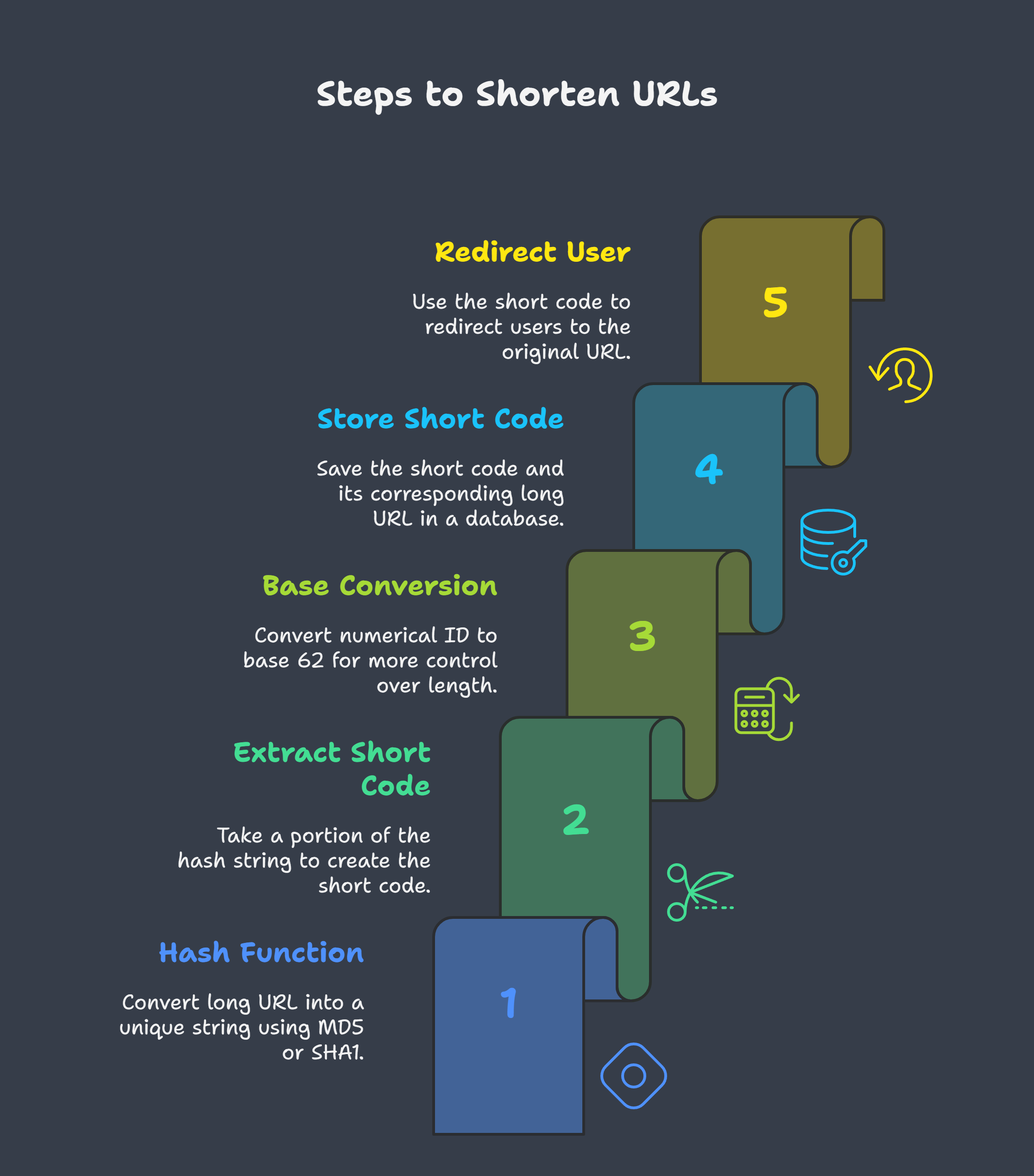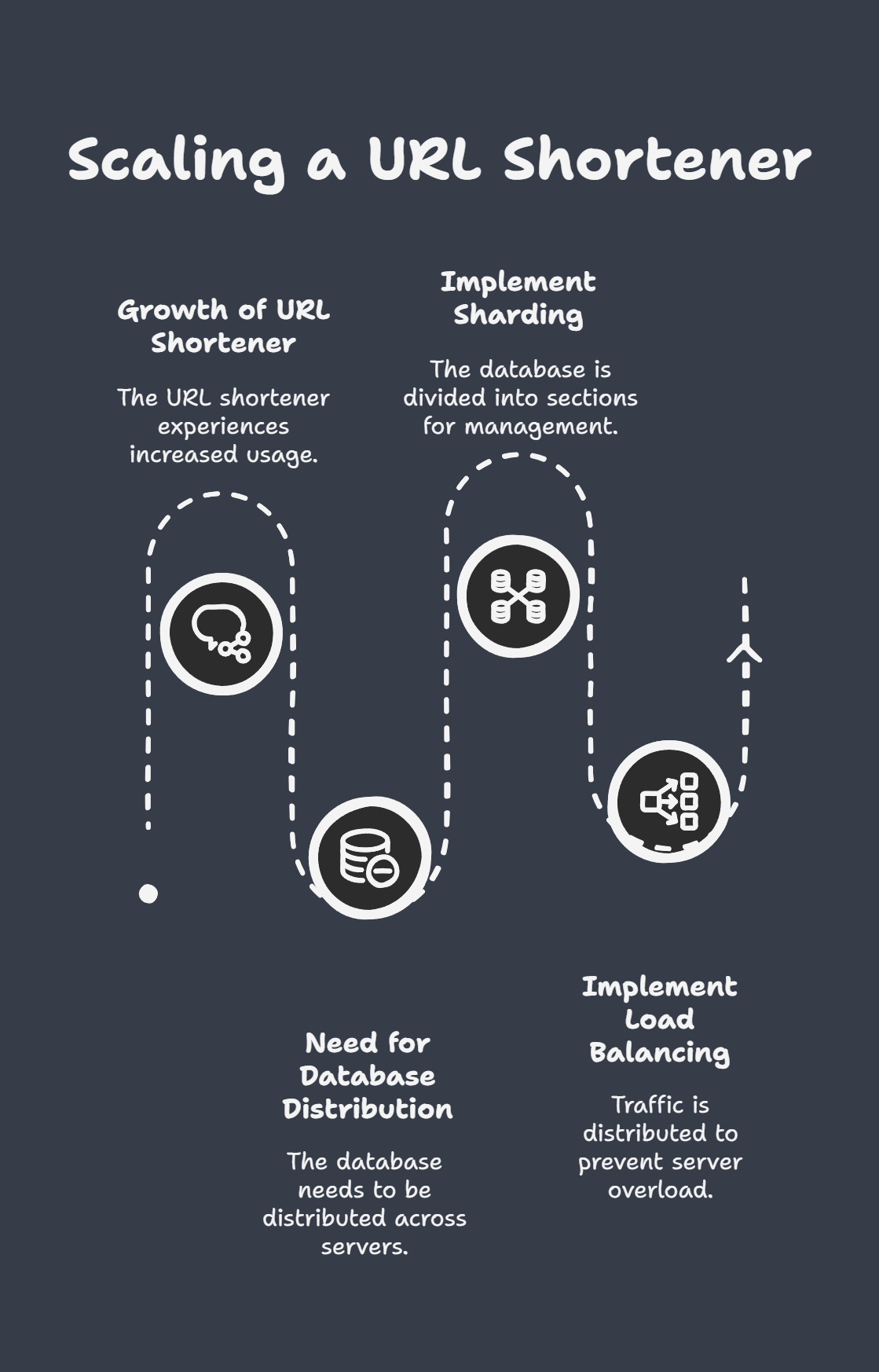Ever wondered how tiny links on Twitter handle so much traffic? Or how a simple short link can redirect you to a massive website? The secret lies in smart engineering. Building a URL shortener that can handle a surge in clicks is a fascinating challenge. Let's dive into building one that can handle millions of links.
We'll start with the basics and then explore more advanced techniques. This guide is for everyone, whether you're a coding newbie or a seasoned developer.
Exploring a career in Full Stack Development? Apply now!
Choosing the Right Architecture
First things first: you need a solid foundation. A simple approach is to use a relational database like PostgreSQL or MySQL.
You'll store the original URL and its shortened counterpart. This is perfect for smaller projects. Imagine a table with two columns: one for the long URL and one for the short code.
For larger-scale systems, consider Redis or Memcached. These are in-memory data stores. This means super-fast lookups – crucial when you’re dealing with tons of clicks.
Generating Short Codes
The magic happens here. We transform long, clunky URLs into short, shareable ones. A common method is to use hash functions like MD5 or SHA1.
These functions convert the long URL into a unique string of characters. We then take a portion of this string to create the short code. You've probably seen these short codes before—random-looking strings of letters and numbers.
Another approach is to use base conversion. For example, convert a numerical ID in base 10 to base 62 (using letters and numbers). This gives us more control over the length of the short code.
Think of it like giving each URL a unique, shorter name. When someone clicks the short link, we use this name to find the original URL.

Handling Redirects
When a user clicks a shortened link, a 301 (permanent) redirect is the best way to go. This tells the browser that the page has permanently moved to a new location. This is good for SEO.
It also tells search engines to pass along any "link juice" from the short URL to the original. This is a win for the website being linked to.
A 302 (temporary) redirect might seem simpler, but it's generally not ideal for URL shorteners. You want search engines to understand that the short link is just a pointer to the real deal.
Scaling for the Future
As your URL shortener grows, distributing your database across multiple servers becomes essential. Techniques like sharding can help manage this.
Sharding is like dividing your library into different sections. Each section holds a portion of the books (or, in our case, URLs).
Load balancing is another key aspect of scaling. This distributes incoming traffic across multiple servers, preventing any single server from getting overloaded. Think of a librarian directing visitors to different sections of the library to avoid overcrowding.

Conclusion
Building a scalable URL shortener is a journey, not a sprint. Start simple, and then gradually incorporate more advanced techniques as your needs evolve. With a solid foundation and careful planning, you can create a URL shortener that’s both efficient and robust.
Remember, the key is to think ahead and design for growth. By following these steps, you'll be well on your way to creating a URL shortener that can handle whatever the internet throws at it.
















